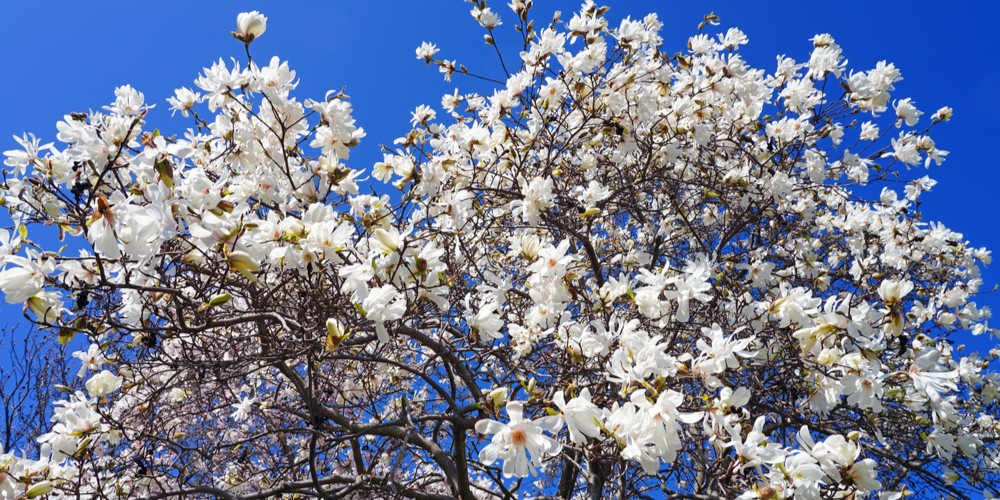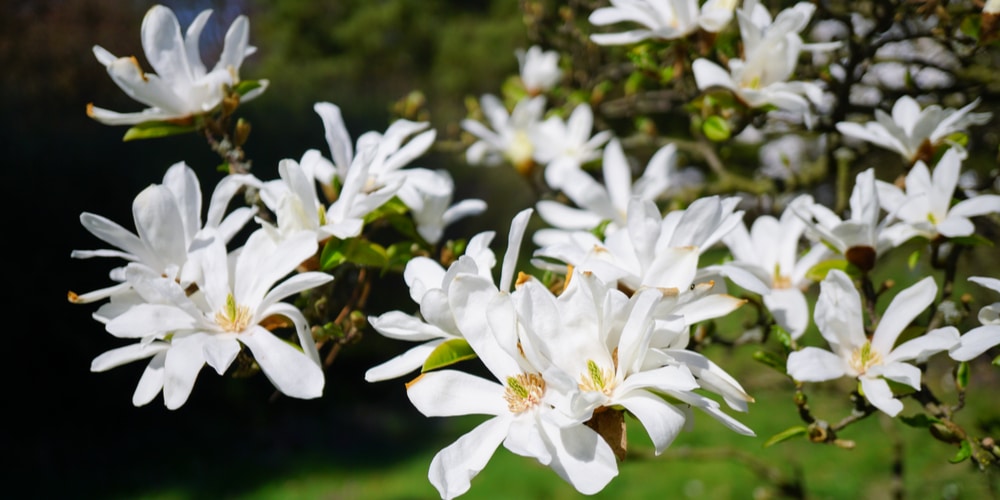You usually won’t see ‘evergreen magnolia’ and ‘zone 6’ in the same sentence, partly because they can’t tolerate freezing temperatures. However, is it possible to plant evergreen Magnolia in USDA hardiness zone 6?
It’s certainly possible to grow magnolias in zone 6, but it has a greater chance to succeed and stay healthy in zones 6b and above. Furthermore, there are several species of magnolias you can plant if you live within the region.
Do Magnolia Trees Stay Green Year-Round?

Magnolias generally fall into two categories, deciduous and evergreen.
Like its namesake, evergreen magnolias are plants that sport shiny green leaves with tones of red, silver, or light green underneath. They tend to stay with most of their foliage intact no matter the season, making them favorites in the yard or garden.
Evergreen magnolias are cheery reminders that there’s still hope waiting at the end of the winter season. Plus, they brighten up the landscape and add a nice green touch of sprawling green wherever you plant them.
Magnolias stay green year-round in warm and temperate zones. However, this may not hold true in regions with prolonged frosts, such as zone 6. Hardiness largely depends on the species- the Southern magnolia (magnolia grandiflora) is evergreen in zones 7 to 9, while the Star magnolia (magnolia stellata) can grow in USDA zones 4 through 8.
Evergreen Magnolia Species You Can Plant in Zone 6
Although it’s a rare sight, some magnolias can grow in zone 6, with Magnolia Grandiflora being one of them. A cultivar of the M Grandiflora, ‘Little Gem’ has the exact tolerances and can grow in the same region.
It’s worth noting that when we say that magnolias can stay evergreen in zone 6, they will usually have a hard time when winter comes. That said, a slight move up to zone 6b increases their chances of thriving, and you’ll have several more options as well.
Southern Magnolia
Perhaps the most famous evergreen magnolia around, M. Grandiflora is beautiful in every sense of the word. When healthy, the tree shows off its shiny, deep green leaves and exquisite white blooms. This species is a fast grower, and you might be surprised to find your young sapling turn into a large tree in just a few years.
Little Gem
A notable offshoot of the M. Grandiflora type, ‘Little Gem’ is shorter but can reach heights of up to 18 meters. It has the same requirements as its evergreen counterpart- plenty of sunshine and hold off on the watering when the frost arrives, and your tree should stay alive and its leaves intact.
Star Magnolia
Star magnolia is elegant to behold and produce unique, star-like blooms ahead of other spring plants and shrubs. It’s classified as a small shrub and puts out low branches, with a maximum height reaching 6 meters. You’ll love not only the curious shape but also the enthralling flower scent as well.
Sweetbay Magnolia
Sweetbay magnolia is hardy enough that it’s classified as a tree that can grow in USDA zones 5 to 10. In zone 6 it won’t grow taller than 9 meters, which makes it an ideal landscape option in smaller yards or gardens.
The flowers of a sweetbay magnolia is creamy in color and gives off a sweet and lemony scent. To protect it against frost, a layer of organic mulch is recommended.
How to Care for Evergreen Magnolia Zone 6
Magnolia trees should be planted where they can get full sunlight and protection from strong winds. For the greater part of the year you can just observe its regular watering requirements, but once the threat of frost looms you should do a few things to ensure its survival.
Magnolias generally can survive a temperature of 20 degrees F, but damage can occur when it gets to zero degrees F or lower.
We recommend wrapping your magnolia tree, particularly the trunk and branches using blankets and something to fasten it in place. Then, a thick layer of mulch should be applied on the ground to keep the cold away from the shallow roots. Alternatively, you can put stakes around your magnolia and wrap burlap around them, then fill up the rest with dry leaves.
Related Article: Magnolia Tree Zone 6 Growth and Care Guide

